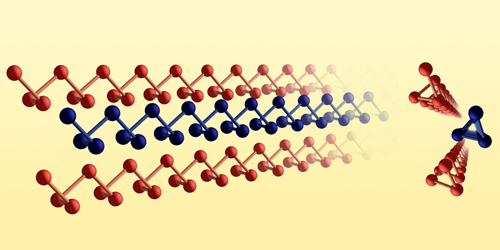From Crystal to Nanowire
Amid the possibility space of crystalline compounds are ones that can be readily turned into one-dimensional (1D) materials with desirable properties. A team at the University of Florida, Gainesville, has now provided explorers of that space with a map of sorts. Joshua Paul and his colleagues have demonstrated a way to sift the Materials Project database—an open-access encyclopedia of more than 100,000 compounds—for crystals that should readily separate into stable 1D nanowires [1]. Among the crystals pinpointed by the team are compounds that could yield nanowires with applications in spintronics and quantum technologies.
The researchers used their previously developed algorithm to identify which atoms in a crystal’s unit cell are chemically bonded on the basis of whether the atoms’ radii overlap with one another. Next, they looked for bonded atoms in linear clusters that are separated from the unit cell along two axes. Such clusters are held only by the van der Waals force and can therefore be exfoliated from the bulk. It turned out that 551 crystal structures had these characteristics. Paul and colleagues narrowed the sample further using density-functional theory to select only those nanowires likely to remain intact after exfoliation rather than decomposing into a more stable, less useful state.
From the 103 crystals that made it through these filters, Paul and colleagues chose five nanowires with different magnetic moments per unit cell and evaluated their stability under different magnetic configurations. They also selected an additional three nanowires for a study of structural distortions that occur after exfoliation. Such distortions can drastically alter the properties of the nanowire. “It would be sorely disappointing if the metallic nanowire one was attempting to make turned out to be insulating,” says Paul.
–Marric Stephens
Marric Stephens is a Corresponding Editor for Physics Magazine based in Bristol, UK.
References
- J. T. Paul et al., “Stability and magnetic behavior of exfoliable nanowire one-dimensional materials,” Phys. Rev. Mater. 7, 076002 (2023).




